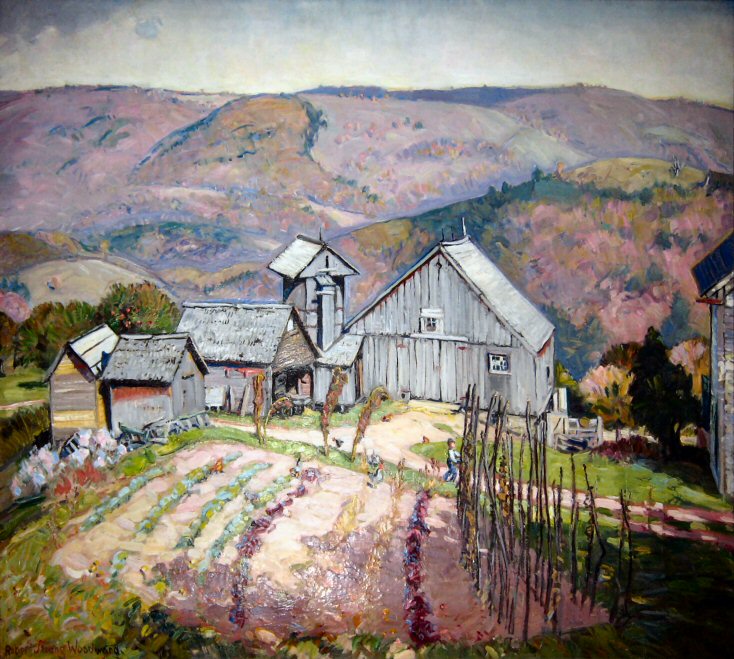Quick Reference
Unknown
Unknown
Oil on Canvas
Landscape
Farm, Landscape & Views, People
36" x 42"
Unknown / NA
Unknown
NA
Related Links
- See also the...
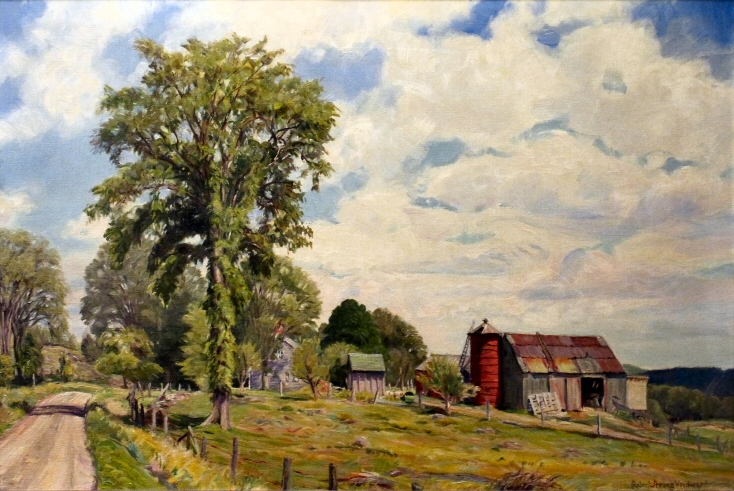 Farms Gallery to view related pieces.
Farms Gallery to view related pieces.
- See also the...
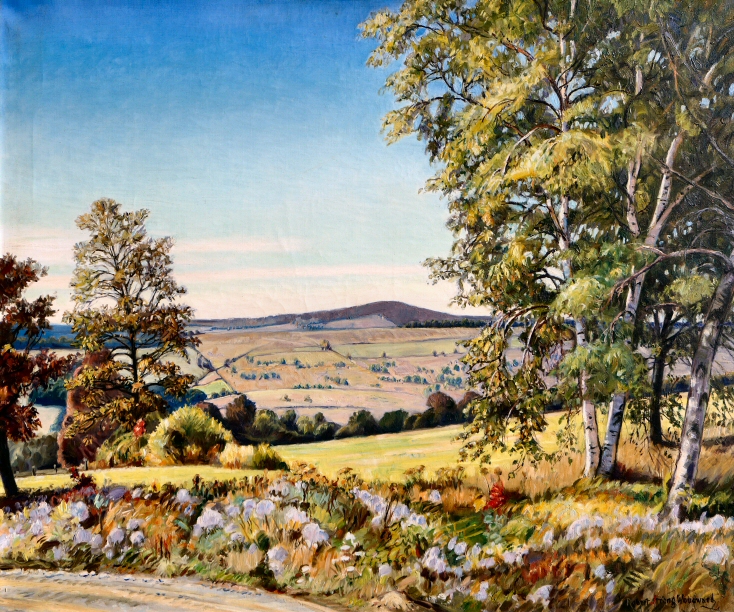 Landscapes & Views Gallery to view related pieces.
Landscapes & Views Gallery to view related pieces.
- See also the...
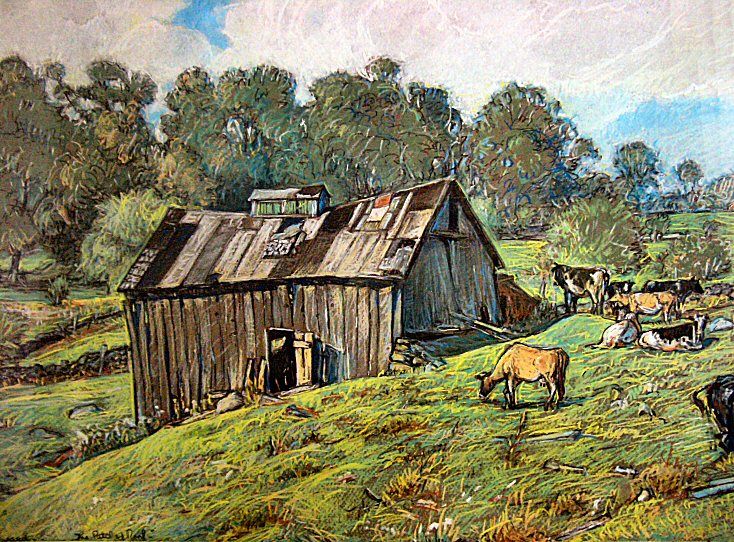 People & Livestock Gallery for related pieces.
People & Livestock Gallery for related pieces.
- See December Farm, A Winter Sketch for further information.
- See Genial Old House, Chalk for further information.
- See Country Piazza for further information.
Featured Artwork: December Farm
RSW's Diary Comments
None
Additional Notes
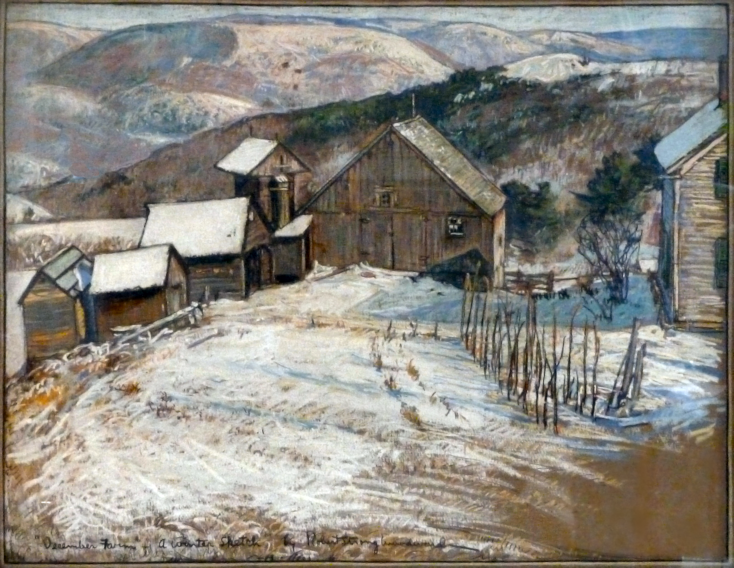
 December Farm, A Winter Sketch, 1929
December Farm, A Winter Sketch, 1929
We believe there are three other drawings of this scene:
A Winter Sketch, 1931
New England Farm, A Winter Sketch,1931
New England Winter, 1932
Unfortunately, their whereabouts are currently unknown.
There will always be unanswerable questions when it comes to anything related to the personal past of someone. Like
puzzles missing several pieces, the picture is incomplete. However, this painting resides in a completely different realm of
mystery.
It is signed and named, yet in Woodward's lifetime there is no record of it ever exhibiting. No only that,
there is inexplicibly no entry for it in his painting diary despite hanging in his home for nearly 30 years. Woodward obviously
admired the scene. There are multiple chalk/pastel versions of the same scene, all with varying differences in their name that
HAVE exhibited and frequently between 1929 and 1933.
This painting could have exhibited and we simply do
not have the records. It could have gotten its name that way. But the name now becomes a mystery because the scene is not
nearly as wintry and austere as the chalk sketches. In fact, it is hard for us to say what season this is. The hills have coloring
you would see before the spring bloom or late fall after the leaves have dropped. Spring's early bloom can have many of the same
hues and tones in the painting but the absence of any yellow leads us to say it can't be spring leaving us later fall, early winter.
It is possible this is December and the crops you see in the ground are Autumn or Winter Cabbage or both.
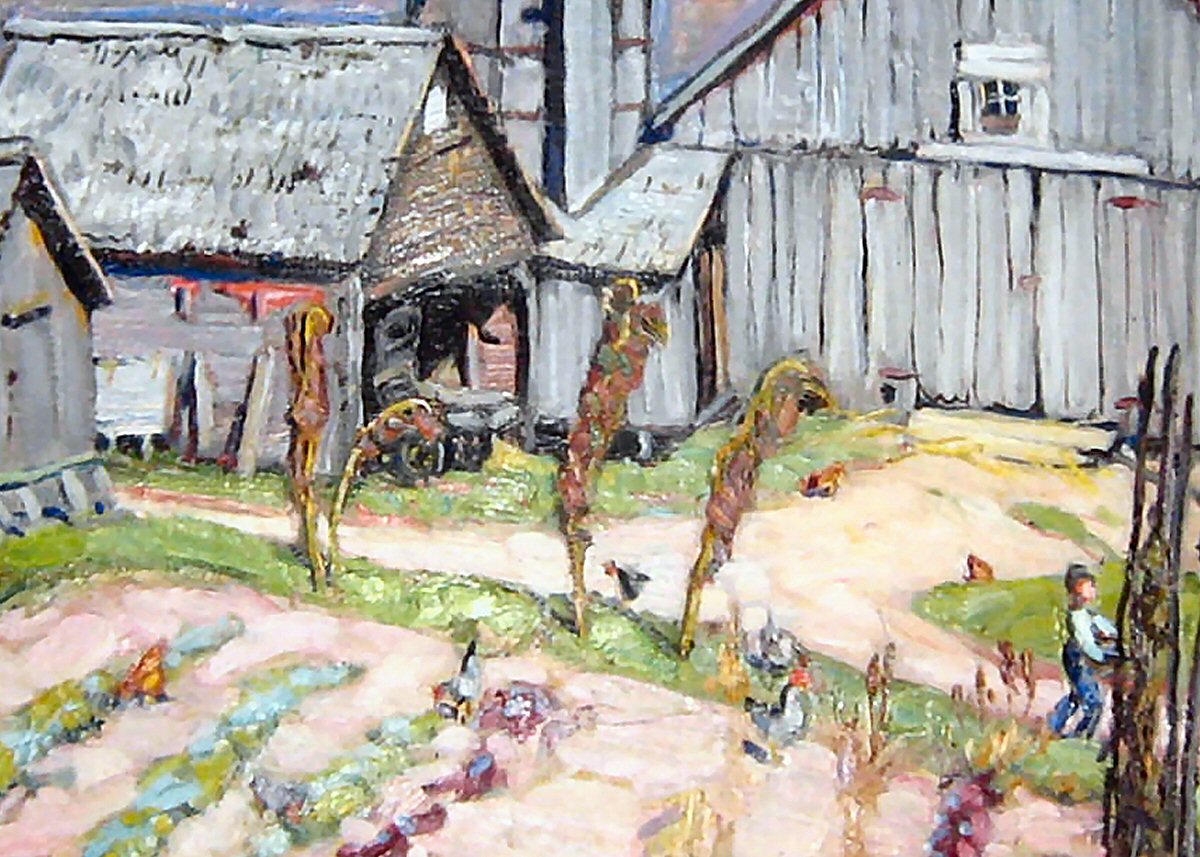
 A close up of the crops.
A close up of the crops.
Note the flatbed truck parked inside the barn.
The truck is notably absent in the sketch.
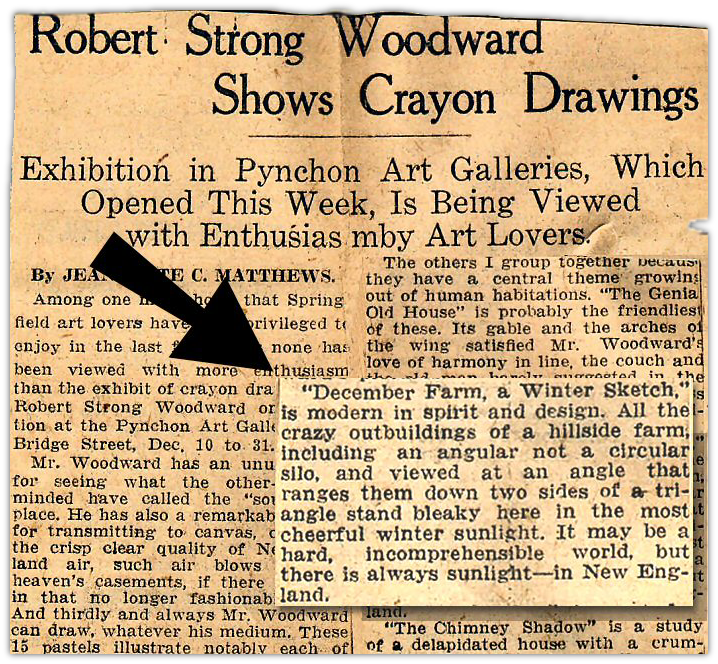
 Springfield Republican, 1929
Springfield Republican, 1929
It then occurred to us that perhaps Woodward was being "poetic" with the name. That maybe "December" is a reference to the impending demise of a farm on its last legs or in its twilight. Is it possible Woodward knows something about the future of this farm and he is recording it for prosperity? Did he go back after a dusting of snow and the crops harvested to make the stark scenes of the chalks as a poetic device? And yet, as Jeanette Matthews points out in her review of December Farm, A Winter Sketch, 1929 that Woodward hints at a glimmer of hope and positivity with his glow of sublte light cast on the depressed farm.
Springfield Republican, 1929, by Jeanette C. Matthews
"'December Farm, a Winter Sketch,' is modern in spirit and design. All the crazy outbuildings of a hillside farm; including an angular not a circular silo, and viewed at an angle that ranges them down two sides of a triangle stand bleaky here in the most cheerful winter sunlight. It may be a hard, incomprehensible world, but there is always sunlight- in New England."
Is Ms. Matthews on to something? Did she see its message of hope? Although we do not believe Woodward focused on hope as
much as he did the promise of potential and an absolute faith in renewal and new life there is something to this leading us back to its
name - the cycles and seasons of life.
It is important to offer some additional context here... December 1929 is just weeks
after the most devastating financial disasters in American history, Black Tuesday, the stockmarket crash that brought on the era of the
Great Depression. It is possible that RSW painted the oil the year before and went back when the farm was shuttered. Note that the
landscape is bare. The garage barn no longer has the truck parked inside it. Is this a farm that went under as a result of the crash
giving the oil its poetic name? If this is the case, that would make
December Farm, A Winter Sketch a depression era editorial piece similar to
Genial Old House, Chalk, 1929 and Country Piazza, 1929.
We will never know the answer to any of these questions unless we find an exhibit this oil hung on the walls. It will give us the date
and year and we would be curious to learn if it was painted before the chalk drawing were made.

.png)

